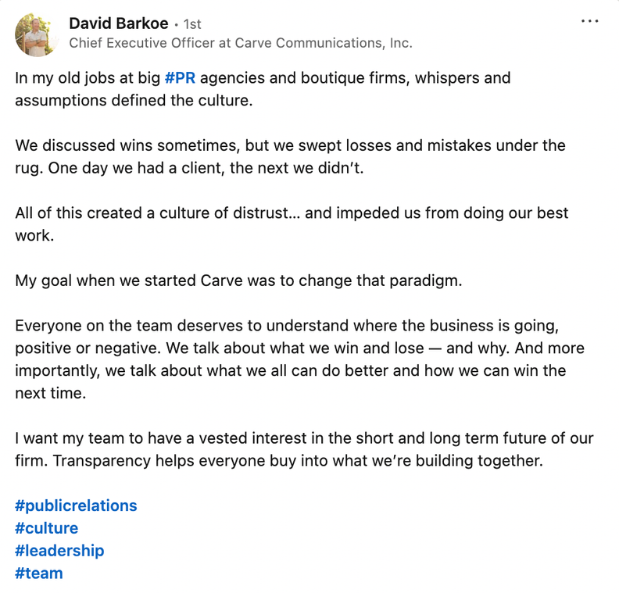How to Find Story Angles People Care About
“Content is King.”
It’s the number one phrase we either love to love, or love to hate. No matter which side you stand on, we all know that living in a content-driven world (a truth universally acknowledged) means that the flow of ideas must be constant.
This can’t just be any old story — it must be a good one. No, a great one.
There’s a lot of half-baked content out there, but it shouldn’t be yours. You need the kind of story that drives results. A story that makes busy reporters with flooded inboxes open your email or stops a Gen Z’s doom scroll with their 1-second attention window.
To the person trapped at a desk with a half-drafted pitch or a blank social media schedule, I know you’re asking the million-dollar question:
How the heck are you supposed to find those stories?
Finding stories that people care about and spark curiosity is partly an art. But it’s also a science — one that we experiment with, reflect on, and tweak with every client (including Carve) multiple times.
So here’s a glimpse into that science.
Collect your materials
Gather anything and everything that can help in finding story ideas. When we’re pulling together ideas for clients, I look at assets like:
Brand messaging decks
Old conference presentations (even ones from years ago)
Any press materials or coverage we have like releases, podcasts, videos, and articles
Relevant third-party articles I’ve saved or interesting newsletters in my inbox
Notes we took from past client meetings
Pro tip: As LinkedIn becomes more of a hub for people-focused thought leadership, you might have employees posting content you never knew about. For example, look at your business development and customer success representatives. They’re the folks on the ground and might be sharing stories or asking relevant questions, an effective tactic for finding story ideas.
On that last one, it helps to interview subject-matter experts like members of the C-Suite or department heads. Prepare a discovery interview just for them based on their expertise (look at their LinkedIn experience, or ask around) and their role in the company.
If you need help putting together the interview, we’ve got you covered, but here’s my biggest tip:
Dig deeper than what you can find on Google, AI tools, or even in company materials. You’re looking for personal anecdotes and unique thoughts to pair with information from the assets above that will help build interesting stories.
How to find stories
So now that you have all these assets in front of you, what are you looking for? What’s the difference between a great story and something boring, no matter how well-intentioned?
Below are a few things I listen to and look for. When you pinpoint these things, you can work to develop it even more and ensure it turns into a story that grabs attention.
Snappy words or phrases
Sometimes, there are some words that just flow well together and make for a great headline.
Look in your conference decks or interview notes — any time a real person is speaking or presenting. You’re not just looking for words or phrases that sound great together; you’re looking for something that holds a promise of more.
Here are a few examples of real phrases I’ve heard in interviews with executives that immediately caught my attention:
“Unsaid rules”
“What happens to expertise in the era of AI”
“Worry only once”
Some companies have a few turns of phrases or concepts they’ve coined for themselves. In some cases, they become interesting pitches. One of our clients, StreamGo, is creating tech to filter “forever chemicals” (as the industry calls it) from our water supply. As a result, StreamGo created the phrase “Forever Ends Today™.”
You don’t want to overdo the company spirit in a pitch, but it could be a great headline.
Personal anecdotes
Some of the articles I’m most tempted to read start with a personal anecdote. Draw a reader in and then launch into your agenda, versus the other way around.
Take this LinkedIn post for example. It starts off with the executive’s (our CEO) experience at prior agencies where “whispers and assumptions” defined the culture.
But if you read on, you’ll see that he uses his anecdote to bring the reader close and start talking about what happens internally at Carve. He starts off personal, but ends on business.
Pro tip: If you’re looking through interview notes, look at the rambles and tangents to start finding stories. Even if it doesn’t feel productive at the time, some of those rambles can contain these anecdotes, which turn out to be gems.
This doesn’t just work well for LinkedIn posts, you could also use this tactic to pitch executive spokespeople to journalists. They get so many emails in their inboxes with catchy hooks about products and industry problems but, when done well, an anecdote can stand apart from the rest.
Take this excerpt from a pitch that we wrote for our client:
“Jason has insightful tips for the next generation of sports business leaders. At 13, he set up booths at trade shows. At 16, he took his college tuition money to open his own hobby shop storefront. . .
And the rest is history!
Jason attributes his early experiences and passion for the industry to how Upper Deck operates today. If interested in connecting, Jason would be happy to speak to you about…”
This approach landed Jason a few opportunities, like an interview on The Sports Entrepreneur Podcast by Marcus Luer.
It’s much more effective than starting out with the standard: “Jason, President of Upper Deck, is an expert in…”
A new play on an old topic
Trendjacking is one of the most effective ways to pitch and secure media opportunities, but there’s one thing people struggle with:
It’s not enough to talk about what’s trending — you need to bring a unique point of view. Meaning, what you have to say must be different from what everyone else says.
Here are a few ways to offer that unique point of view:
Make everyone think bigger. When AI had just blown up in the news, one of our clients said “AI nerds aren’t always engineers.” This stuck out because a lot of what we were seeing was targeted at product/engineering teams.
Lift the curtain on the topic, the industry, or both. Interesting behind-the-scenes material stops people in their tracks. Talk about something little-known or not talked about at all, and tie it to what’s trending.
Challenge what everyone else is saying about a certain topic. Go against the grain and provide an opposing view, but make sure it’s authentic to your brand.
An example of that last tactic is something we did for a diversity, equity, and inclusion topic. We challenged the norm and pitched a journalist an inclusivity angle from a toy company producing products for senior people. It resulted in a Forbes feature for our client, Educational Insights.
Proven areas of audience interest
Remember what I said about finding the employees posting content on LinkedIn? If they have enough people interacting with their posts, you’re looking at a mini-testing ground for audience interest.
Look at thought leadership posts – not hiring announcements, webinar registrations, or anything promotional – with healthy levels of discussion in the comments. What are people saying?
Dig into why people are interested in those topics; there are opportunities for finding story ideas there.
Over time, recognizing what’s gold and what’s not becomes second nature when finding story ideas. Pretty soon, you’ll know a good story when you hear one and you can take it to the media immediately.
Remember this: people don’t want to stumble through your company jargon – consumers or reporters – or get hit with the same things they’ve seen before. People care about your stories because they connect with them.
That’s how you’ll get a reporter to email you back and a Gen Z to look up from their phone entirely.





